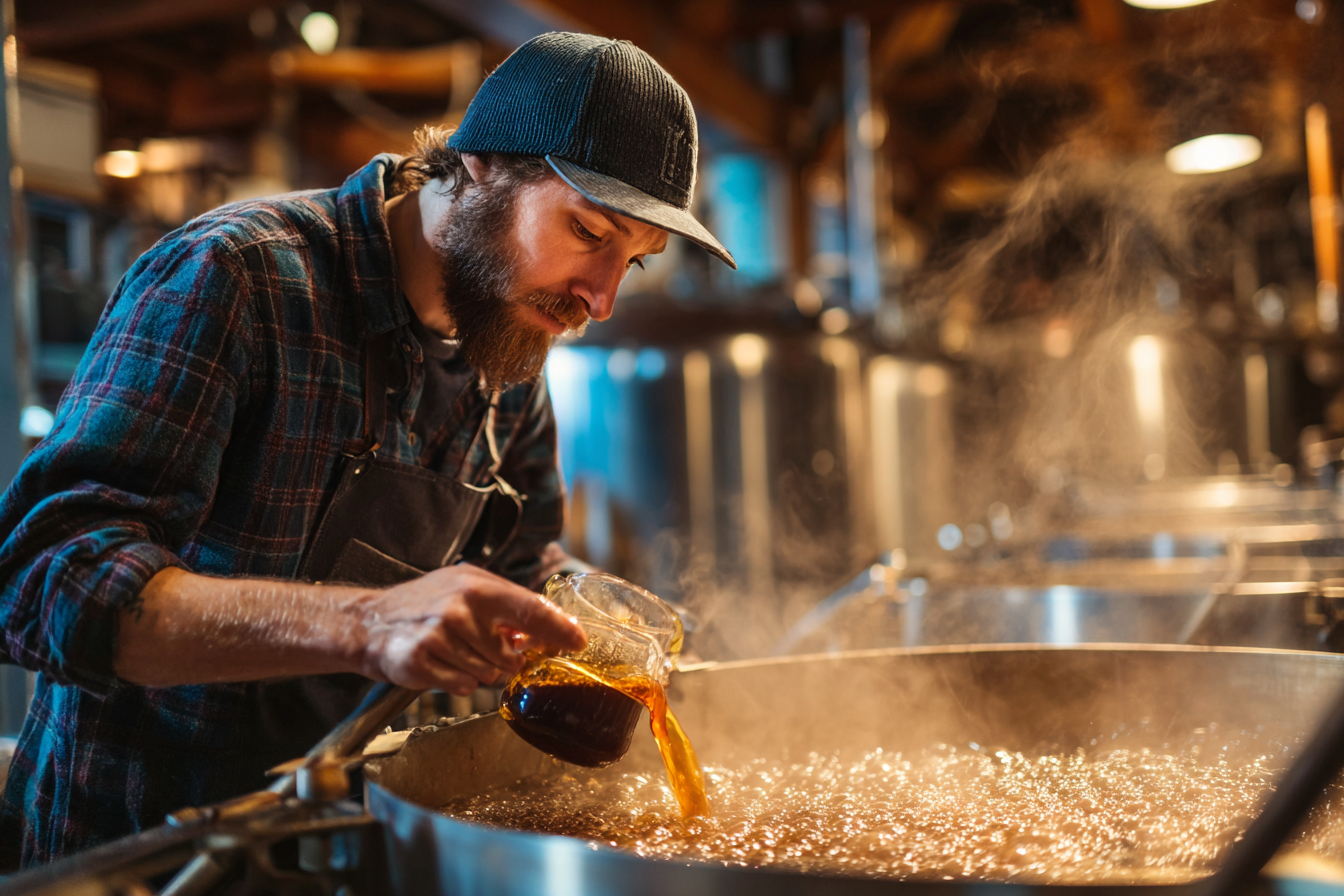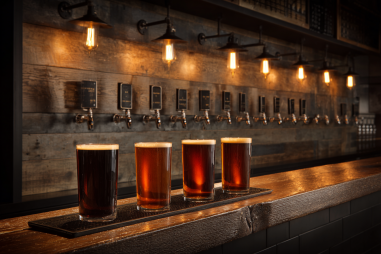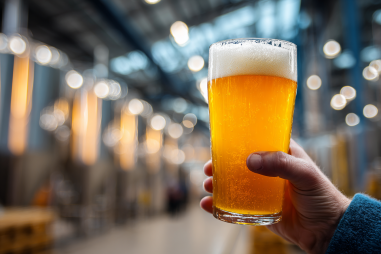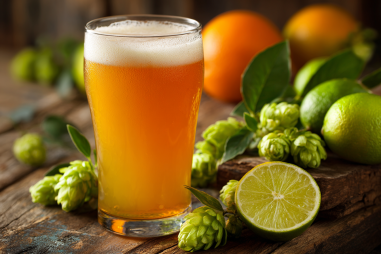Brewing a Double IPA is a rewarding venture for any craft beer enthusiast or professional brewer aiming to capture the bold, intense flavors that define this popular style. Known for their high alcohol content, robust hop bitterness, and aromatic complexity, Double IPAs push the boundaries of hop-forward brewing. Whether you’re brewing at home or refining your commercial recipe, mastering the Double IPA brewing process involves careful ingredient selection, precise brewing techniques, and keen attention to fermentation. This guide will take you through each phase, ensuring your Double IPA turns out balanced, flavorful, and true to style.
Introduction to Double IPA Brewing
The Double IPA, sometimes called Imperial IPA, is essentially an amplified version of the classic India Pale Ale. It’s characterized by a significantly higher alcohol by volume (ABV), typically ranging from 7.5% to 10%, and an assertive hop presence that delivers intensified bitterness alongside vibrant aroma profiles. This style emerged from the craft beer scene’s desire to explore more intense flavors and fuller-bodied brews.
Brewing a Double IPA isn’t just about throwing in extra hops; it’s about carefully balancing malt, hops, yeast, and fermentation to create a harmonious but bold beer. Understanding the fundamentals of the brewing process is crucial to achieving the characteristic punch without letting the bitterness overpower the palate.
Essential Ingredients for Double IPA
The backbone of any Double IPA lies in its ingredients. Each element contributes to the beer’s final profile:
- Malt: Double IPAs require a strong malt base to support the higher alcohol content and to balance the intense hop bitterness. Pale malts, like 2-row or Maris Otter, are commonly used. Specialty malts such as Munich or Crystal may be included in small quantities to add complexity and depth.
- Hops: Hops are the star of the show. Varieties with strong aromatic qualities such as Citra, Simcoe, Amarillo, and Centennial are popular. These hops provide citrus, pine, floral, and tropical notes crucial for the style’s signature profile.
- Yeast: A clean, high-attenuating yeast strain allows the malt sweetness to remain balanced while ensuring effective fermentation of the increased gravity wort. American ale yeasts like Chico (Wyeast 1056 or White Labs WLP001) are favored for their neutral profiles and reliable attenuation.
- Water: The water profile should complement the beer style; a higher sulfate level is generally preferred to accentuate hop bitterness and crispness.
Step-by-Step Brewing Stages
Successfully brewing a Double IPA requires precision at each stage. Here’s a breakdown of the core steps:
Mashing
The mashing process extracts fermentable sugars while creating the malt backbone. Aim for a mash temperature around 152°F (67°C) to strike a balance between fermentability and body, resulting in some residual sweetness that counters the hop bitterness.
Boiling
A vigorous 60 to 90-minute boil helps evaporate unwanted volatile compounds and is critical for proper hop utilization. Boiling also concentrates the wort since Double IPAs feature higher original gravities than standard IPAs. Consider longer boils if you want to increase gravity without increasing batch volume.
Cooling and Wort Aeration
Rapidly cool the wort post-boil to pitching temperature to prevent contamination and encourage yeast health. Oxygenate the cooled wort adequately, since high gravity worts require more oxygen for a healthy fermentation.
Managing Hop Additions for Maximum Aroma and Bitterness
Hop management is an art in Double IPA brewing. The timing and quantity of hops added are crucial in crafting the beer’s bitterness and aroma layers:
- Bittering hops: Usually added early in the boil (60 minutes or more) to maximize alpha acid isomerization, providing the harsh bitterness typical of the style.
- Flavor hops: Added mid-boil, often between 15-30 minutes before the end, these contribute flavorful hop compounds without excessive bitterness.
- Aroma hops: These are added in the last 5 minutes of the boil, during flameout, or even post-boil as whirlpool additions. They release volatile oils that create complex and enticing hop aroma.
- Dry hopping: One of the defining techniques for Double IPAs is dry hopping during or after fermentation. This infuses the beer with intense hop aromas of citrus, pine, and tropical fruits without adding bitterness.
Utilizing hop additions strategically throughout the process enables you to layer bitterness and aroma, crafting the multi-dimensional profile Double IPA drinkers expect.
Fermentation and Yeast Selection
After brewing, fermentation is where your beer really comes to life. Given the higher gravity of Double IPA wort, choosing a yeast strain that can handle elevated alcohol content and fully attenuate is pivotal. American ale yeast strains such as Wyeast 1056, White Labs WLP001, or Safale US-05 are popular due to their clean profile and high attenuation rates, allowing hop flavors to shine without interference from fruity esters.
Maintain fermentation temperatures between 65°F and 70°F (18°C–21°C) to ensure optimal yeast performance while avoiding off-flavors. Because of the increased gravity, fermentation might take longer, and monitoring the process is important to prevent stuck fermentations.
Tips for Achieving Balance in High-Alcohol Brews
One of the common challenges with Double IPAs is maintaining harmony between strong hop bitterness and malt sweetness while managing alcohol warmth. Here are tips to achieve that balance:
- Use a solid malt base: Incorporate specialty malts carefully to add body and sweetness without overshadowing hop flavors.
- Adjust water chemistry: Elevate sulfate levels modestly to accentuate hop crispness but balance chloride to preserve malt smoothness.
- Don’t overdo bitterness: Aim for about 60-100 IBUs; more isn’t always better. Excessive bitterness can make the beer harsh instead of enjoyable.
- Manage fermentation carefully: Healthy yeast activity ensures the beer doesn’t carry residual sweetness or off-flavors.
- Consider blending: Some brewers blend batches with different hop profiles or malt bills to refine balance.
Common Challenges and Troubleshooting
Brewing Double IPAs can be tricky due to their intense nature. Here are a few common pitfalls:
- Overly harsh bitterness: May result from excessive late-addition hops or high alpha acid percentages. Adjust hop schedules and consider filtration or cold crashing to reduce harshness.
- Stuck fermentation: High gravity can stress yeast. Pitch ample healthy yeast and maintain temperature. Nutrients can help if fermentation slows.
- Poor hop aroma retention: Avoid excessive heat during aroma hop additions and use dry hopping techniques to maximize volatile oil preservation.
- Lack of mouthfeel or thin body: Adjust mash temperature slightly higher or add dextrin malt to boost body without adding sweetness.
Experimenting and keeping detailed brewing logs will help you fine-tune your recipe over time.
Bringing Your Perfect Double IPA to Life
Brewing a Double IPA offers a chance to showcase craftsmanship and creativity. With careful attention to each step of the brewing process—from ingredient selection and malt balancing, through hop timing, to yeast management—you can produce a bold, aromatic masterpiece that captures the spirit of this beloved style. Embrace the challenge, enjoy the experimentation, and most importantly, savor the rewarding taste of your perfectly crafted Double IPA.







